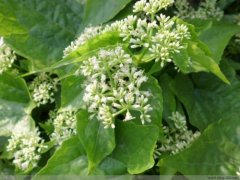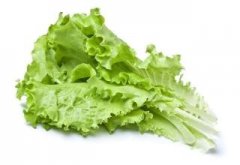Ministry of Ecology and Environment: the green environment should be protected, and the green environment payment plan should be implemented.
The Green Environment payment Program has been implemented for one year, in the hope that farmers can convert the original rice fields into imported alternative crops, export main crops, key development crops, and so on, so as to reduce the rice cropping area. What do the front-line staff think?

The implementation of the green environment payment plan for land will expire for a year, in which direct payment to land encourages farmers to sell rice to the market, thus changing their previous habit of paying more attention to quantity than quality. Grain merchants point out that direct payment to land does give farmers one more option, but the premise is that the overall policy is properly operated. If the total amount of production is not well controlled and there is too much rice on the market, farmers may not be able to enjoy preferential treatment. The Agriculture and Food Department also stated that next year, in addition to increasing the reward for high-quality rice and adjusting the contents of subsidized crops, the Agriculture and Food Department plans to transfer the first phase of rice farming to dry farming in new water resources competition areas, hoping to achieve the goals of saving water and readjusting the rice industrial structure.
The land green environment payment plan adopts conditional stacking subsidies, as long as more measures are met, the more subsidies farmers can receive, including encouraging farmers to directly receive subsidies in the sales market of high-quality rice, not necessarily paying public grain; encourage rice fields to turn into competitive crops, reduce rice acreage and provide domestic miscellaneous grain supply In addition, the use of agricultural land is also encouraged, and subsidies are available for planting green manure, landscape crops, ploughing and water storage. Compared with the domestic planting area in 106, according to the statistics of the Agriculture and Food Administration, the rice planting area in 107 decreased by 2064 hectares, while the conversion (lease) increased by 4386 hectares, indicating that some rice fields were planted with competitive crops. in addition, new farmers have participated in the cultivation of miscellaneous grains. Lin Chuanqi, head of the Food Industry Group of the Agriculture and Food Department, pointed out that compared with the average rice production from 101 to 105 years, the yield per hectare increased by 15%, the total yield increased by 22% (about 239000 metric tons of rice), and farmers' income increased by 10%.
The plan also focuses on promoting crops to encourage the conversion of rice fields, in the hope that farmers can convert the original rice fields into imported alternative crops, export main crops, key development crops, and so on, so as to reduce the area of rice cultivation. Lin Chuanqi said that the Agriculture and Food Administration has considered whether the conversion of other crops will lead to an imbalance in the yield of other crops, or a lack of willingness to convert, so when formulating key items for the development of crops, it should first consider crops with a larger planting area in China, such as sweet potatoes, spring onions, and pumpkins, so as to increase farmers' willingness to convert, but it will not affect the imbalance in crop production and marketing.
Yang Mingxian, a professor in the Department of International Business and Trade at Fengjia University, also said that the spirit of green environment payment to the land is to introduce concepts such as environmental, green, and ecological benefits, and more consideration should be given to the multi-functional benefits of the environment, and farmers should be allowed to understand the concept. not subsidized products. Lin Chuanqi said that some adjustments will be made to the plan for next year. For example, the reward for high-quality rice is originally intended to encourage those who participate in the contract, obtain production and marketing experience, and organic or friendly farming verification. Another 1500 yuan will be paid, which will be increased to 3000 yuan next year. Mung beans, dwarf beans, and harvested vegetables will be added this year, while key development crops will also adjust their items. If pineapples have an imbalance in production and marketing, move out of suitable items.
- Prev

The strawberries are big and fat when planted with bio-carbon-based fertilizer and vinegar.
The small flower Magnolia biochar is combined with vinegar to make the strawberries big and fat. Do you want to learn? Let's take a look at the introduction below. Huang Yingbin, a senior researcher at the ecosystem Technology Research Office of the Central Branch of the Industrial Technology Research Institute, said that the small flower Magnolia originated in central and southern China.
- Next

American and Roman lettuce: American and Canadian romaine lettuce causes disease, the Food and Drug Administration urgently issues import controls
Is there a problem with American and Canadian lettuce? Why don't eat Meijaluo lettuce for a while! The Food and Drug Administration urgently issued import controls tonight, calling on the public to pay attention. Let's take a look. Taiwan's Luoman vegetable imports a total of 4976 metric tons annually, accounting for a proportion of imports from the United States.
Related
- A one-day flower show brings 130 million yuan in orders! Nanhai, this Phalaenopsis exhibition is amazing
- What do the flower language and meaning of Lutheran tree mean? Precautions for planting Lutheran tree
- Encounter Chaoshan Kongfu tea, not without this cup of Phoenix single clump
- The durian market in Vietnam and Thailand is flooded. The price of imported durian has plummeted by 30-40% in a month.
- Shanghai solved the problem of local vegetable supply by planting 80,000 mu of green leafy vegetables.
- Wageningen University has become the best agricultural university in the world for the seventh time in a row.
- The strongest export season of South African grapes is full of challenges, with exports to Russia falling sharply by 21%.
- Sri Lanka is on the verge of bankruptcy, "Tea for debt" Organic Agriculture Revolution aggravates the Food crisis?
- Turning waste into earthworm manure and worm manure into organic fertilizer-A new choice for auxiliary farming
- Organic rice growers shoulder the responsibility of nurturing agricultural talents! Yinchuan Sustainable Farm with Organic Life Camp

